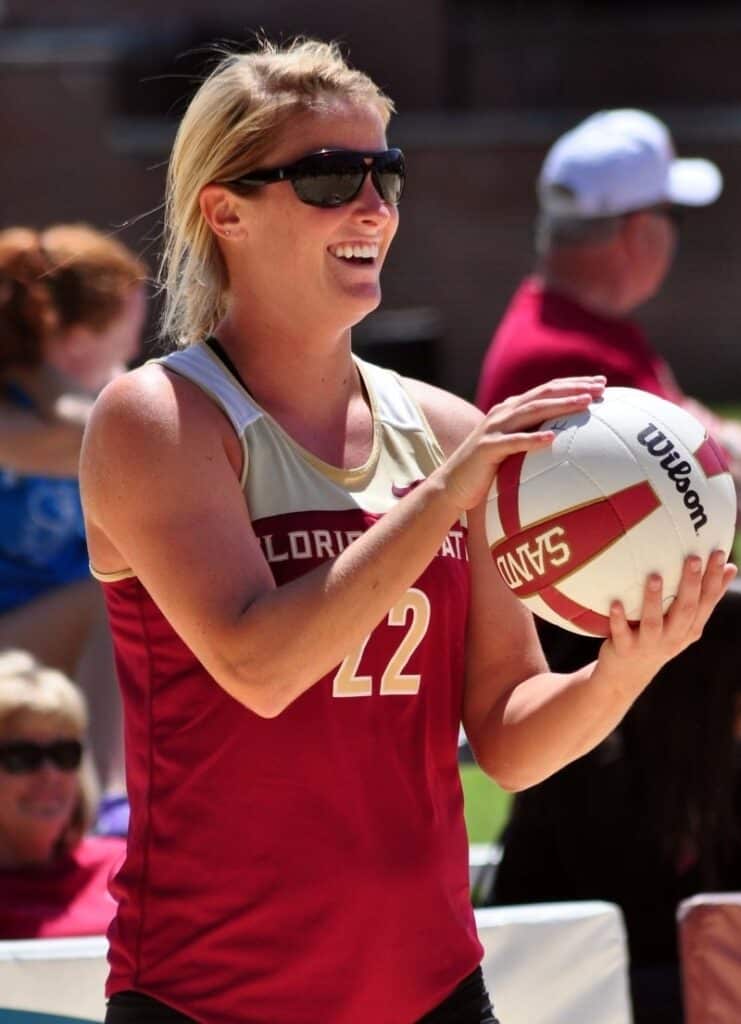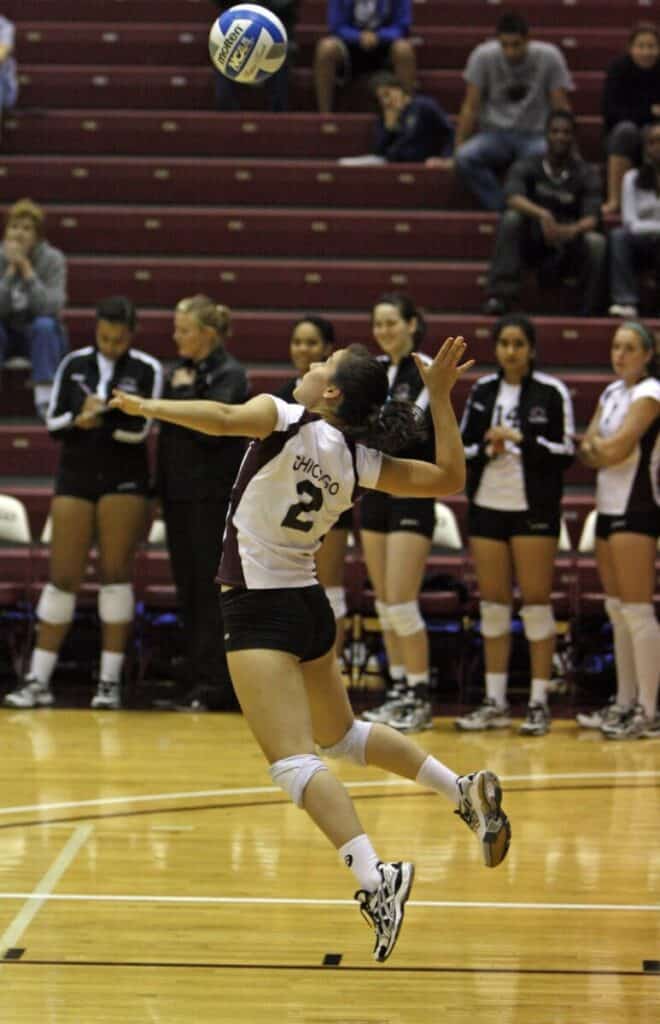In volleyball, there are several different types of serves. You may hear of a float, a floater, or even a jump floater, and wonder what that is.
A float serve is an important tool to have when you’re serving in volleyball. It’s a specific way of serving that allows air currents to have unpredictable effects on the ball, making it difficult to receive. It makes a great change of pace to doing the standard topspin serve every time.
While the floater is super common in sand or beach volleyball, it’s also very useful in indoor volleyball as well. You may think it wouldn’t be as helpful inside of a gym, but it can still be quite effective.

Why Are Float Serves Hard to Receive in Volleyball?
In volleyball, the most common serves and attacks are hard-driven topspin hits. These fly through the air with speed and power, but they are very predictable.
What makes a float serve hard to receive is that it is unpredictable. When a floater is served very well, it can dance or shimmy in the air and suddenly drop unexpectedly. Other times it will sail and go further than expected or simply die and drop right after crossing the net.
What makes the float unpredictable is the physics involved. In almost every setting there are air currents that affect the ball even when they are imperceivable to us as players. The more drafty the gym, the more likely your floater will cause problems for your opponents!
When you serve a dead ball (no spin at all), the air within that ball was suddenly compressed when you struck it to serve. As the momentum carries the ball through the air, that air is shifting inside the ball as it quickly regained a natural spherical shape. This is making it very susceptible to influence from outside air currents.
As soon as there are any air currents around the ball, they will have a great effect on it because it doesn’t currently have a strong spin in any direction. This makes it very unpredictable, even for the server.
What Are the Advantages To A Floating Serve?
You may wonder if it’s worth learning to master the floater, especially if you have a strong topspin serve.
The main advantage to a floating serve in volleyball is that it is a significantly different serve than the topspin. When everyone is expecting a strong, fast, and direct serve, the floating serve throws of the receiver.
This works similar to when a pitcher in baseball is throwing as fast and as hard as possible pitch after pitch and then suddenly throws a changeup. While the pitch may not be that challenging, simply fooling the batter with unpredictable speed and spin can mess them up.
It’s the same with the floater. Especially when you’re in the middle of a streak of good strong serves, if you throw in a floater at the right time, you may score an ace just because it looks so different from what your opponents are expecting.
Would you like to shop for our favorite recommended player products? Choose the item below and click to shop on Amazon.
How To Serve a Floater in Volleyball
The floater is one of the two main overhand serves. You will begin by facing the net with your feet slightly apart, non-dominant foot forward. Most of your weight should be on your back foot.
Begin with the ball in your non-dominant hand and a great tip is to start with the air hole of the ball in your palm. If you begin this way the ball is going to start with the heaviest part of the ball pointing down, which makes it more likely to “float” or drift in the air.
As you toss it straight up, don’t launch it high into the air, you simply want to raise it quickly to the height your arm can extend for your overhand swing, so usually 12 to 18 inches above your tossing hand.
You should be releasing the toss about level with your head. So the ball will be placed in front of your hitting shoulder and you will be stepping into it with your swing.
Now step forward and swing with an open palm, fingers spread. You want to slap the ball with your firm palm (not your fingers) and pop it, making contact right in the center of the back of the ball. This gives the ball a punch and no particular spin.
It’s critical that you do not snap your wrist as you do this serve!
When it’s sailing through the air it is hard to predict and anticipate exactly where it will go because any draft in the air can cause it to shift. The ball can weave or bob or even just die (drop suddenly) which makes it challenging to play for your opponents.
A really good floater will have a pretty flat trajectory, not a rainbow shape. While it’s always tempting as a server to have the mindset that a harder serve is harder to return, the floater is actually the opposite.
The softer you hit it, the more movement and the more unpredictable it can turn out. This is like the pitcher who uses a change-up in baseball. Everyone gets used to hard, fast, and straight, then you pop them with a floater.
If you would like to learn to master the other types of volleyball serves check out Mastering the 4 Types of Serves in Volleyball.
Volleyball Jump Float Serve

When you’re doing a jump floater, you’re going to combine the description above for how to do a regular floater with a short jumping approach. Most players find it easiest to use a similar approach to their hitting approach.
With the jump floater, you still want to limit how high you toss and how hard you swing. Remember it’s critical not to strike the ball with a closed palm or snap your wrist, you are still trying to create that “pop” that creates the unpredictable movement.
Photo credits:
Florida State image by RonJonMan on flickr.com: https://creativecommons.org/licenses/by-sa/2.0/, cropped to zoom.
Jump float serve image by Eric Guo on flickr.com: https://creativecommons.org/licenses/by/2.0/, cropped to resize.
Recent Posts
Athletes, listen up! Do you have a closet full of old jerseys, sweatpants, and tees that you just can't seem to part with? Well, dust them off, because you're sitting on a goldmine of fashion...
You may have heard, or you may have noticed, that there's been a change to the rule about double contact in volleyball. In 2022, an experimental rule change began to be implemented, where the double...
